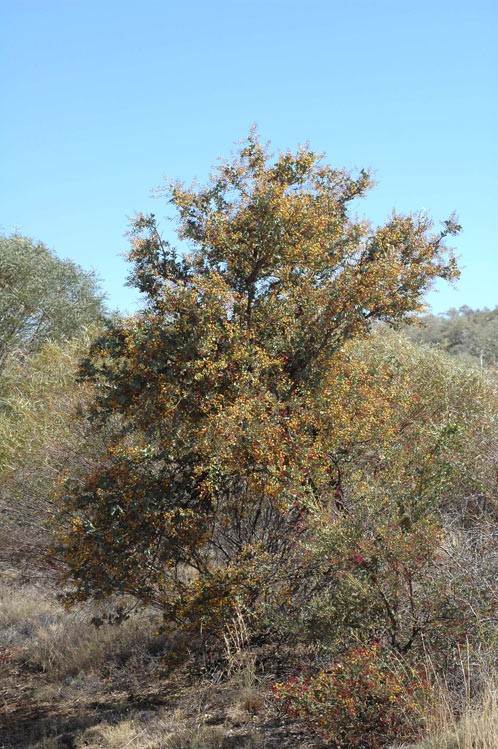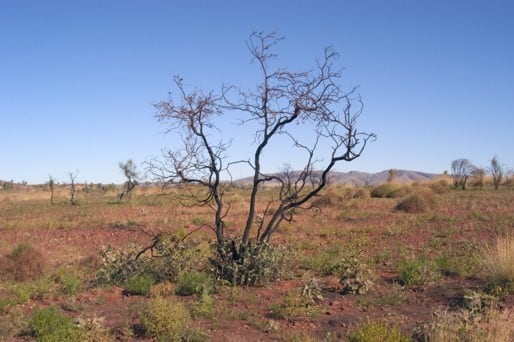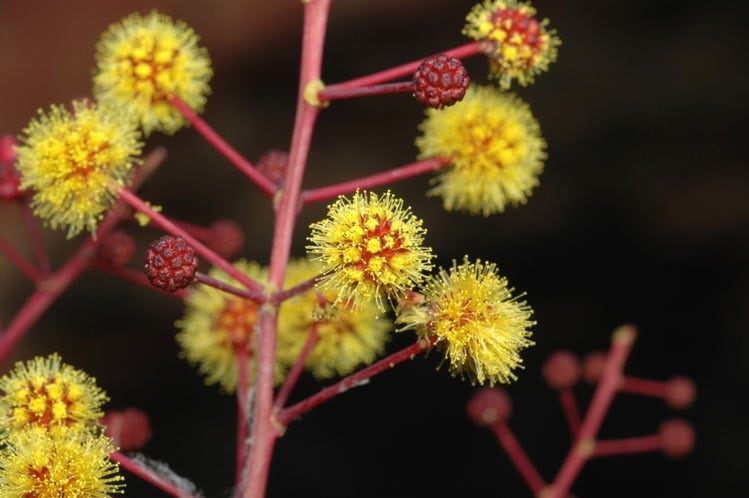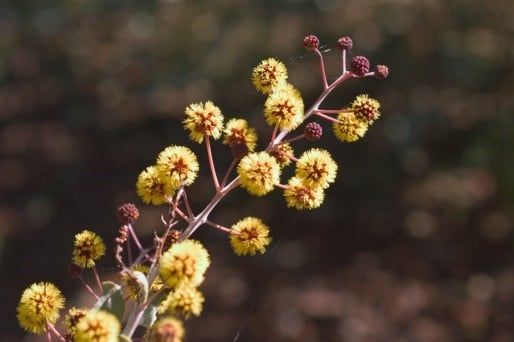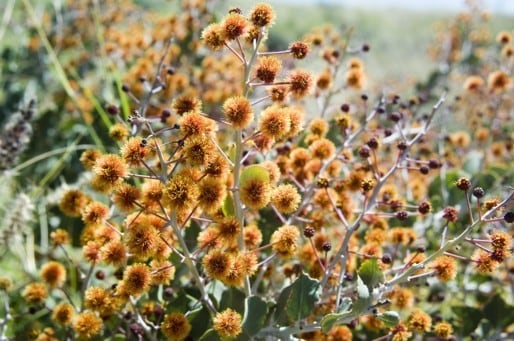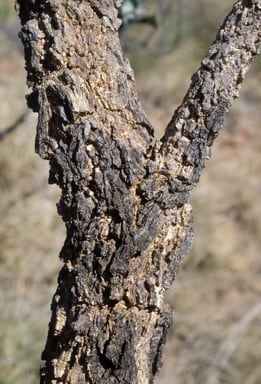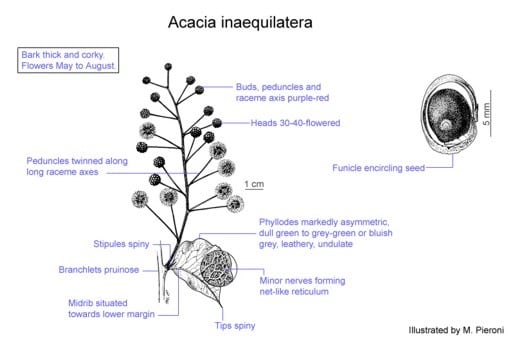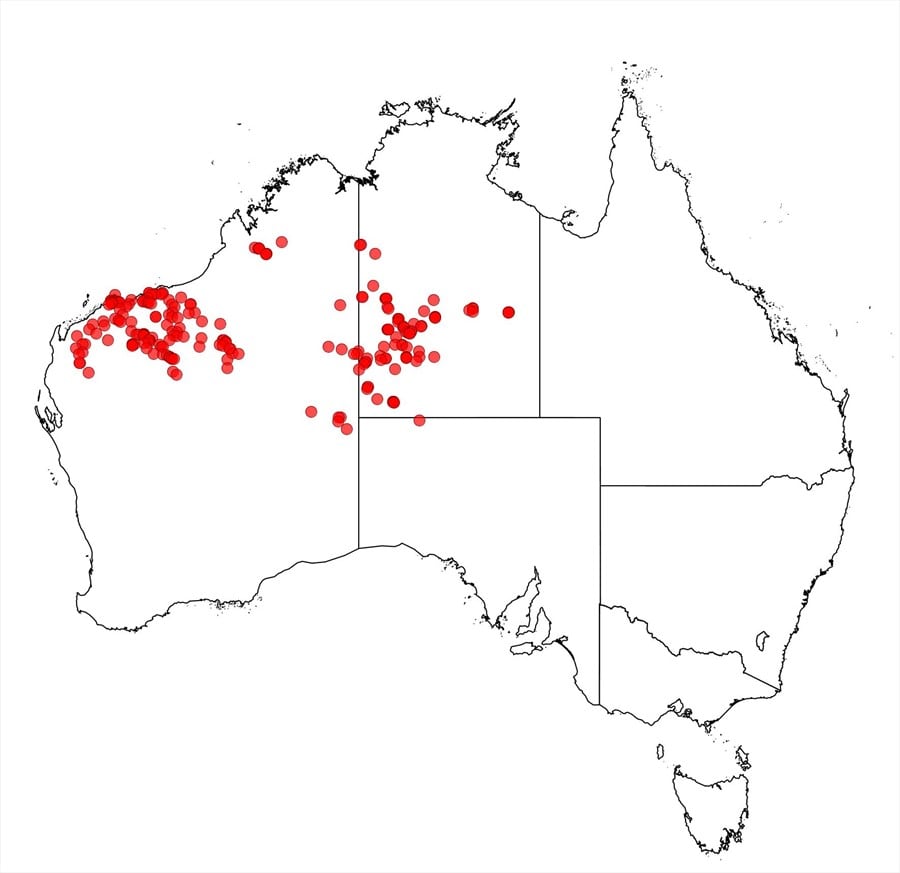Acacia inaequilatera Domin
WATTLE
Acacias of Australia
Common Name
Fire Wattle, Kanji, Corky Kanji, Camel Bush (Pilbara)
Family
Fabaceae
Distribution
Found from North West Cape E to Lake Disappointment, on Nerrima and Luluigui Stns in the southern Kimberley region, and from near Balgo S to the Blackstone Ra., W.A., and NE to near to Davenport Ra., N.T.; also north-west S.A.
Description
Somewhat gnarled glabrous tree 2–4 m high, sometimes to 8 m, frequently with a single, ±crooked trunk and craggy branches. Bark thick, corky. Branchlets normally pruinose. Stipules spinose, sometimes only bases persisting. Phyllodes inequilaterally ovate to elliptic or obovate, sometimes ±obliquely orbicular, (1.5–) 2–6 (–7) cm long, (6–) 15–35 (–45) mm wide, variably undulate, normally acute to acuminate, pungent, coriaceous, dull green to grey-green or bluish grey, glabrous; midrib prominent and near lower margin; lateral nerves forming a close, normally prominent reticulum. Inflorescences terminal or axillary racemes; raceme axes 5–18 cm long and (together with the peduncles) purple-red and often pruinose; peduncles mostly twinned and 1–2 cm long; heads globular, 30–40-flowered, golden, occasionally orange; buds dark purple-red. Flowers 5-merous; sepals free, sometimes shortly united. Pods strongly curved to openly 1½ coiled, irregularly coiled and twisted following dehiscence, to 11 cm long, 6–8 (–10) mm wide, firmly chartaceous to thinly coriaceous, pruinose. Seeds longitudinally oblique, oblong to ±orbicular, 4.5–6 mm long, dull, brown, ½ to fully encircled by funicle.
Phenology
Flowers May–Aug.
Habitat
Grows in sand or sandy loam, often on rocky hills, in tall shrubland with spinifex ground cover.
Specimens
W.A.: 10 km SSE of Luluigui Stn, M.Lazarides 6545 (PERTH); upper Rudall R. area, B.R.Maslin 2055 (K, NSW, PERTH). N.T.: Bloods Ra., C.Dunlop 1908 (PERTH); 125 km NW of Yuendumu, J.R.Maconochie 1004 (K, NSW, PERTH). S.A.: SW of Mt. Cuthbert, P.E.Conrick 789 (AD).
Notes
Very fire tolerant and rapidly regenerates from seed and resprouts from the base and/or develops epicormic growth following fire. Seeds (green or mature) and gum eaten by Aborigines, and the bark used for medicinal purposes.
Most closely related to A. trudgeniana; phyllodes and inflorescences often similar to those of A. marramamba. Formerly confused with A. pyrifolia which has non-corky bark, symmetrically elliptic to ±orbicular or obovate phyllodes with ±central midribs and lateral nerves forming a less prominent reticulum, pale-coloured peduncles, raceme axes and flower buds, and short funicles which do not encircle the seeds.
A few specimens with unusually small phyllodes (15–30 mm long, 6–16 mm wide) occur the Hamersley Ra. and on Legendre Is. in the Dampier Archipelago. Flower heads are normally yellow (but the stamens are red at the base of their filaments); occasionally the heads are orange due to filaments being red throughout and contrasting with the yellow anthers.
FOA Reference
Data derived from Flora of Australia Volumes 11A (2001), 11B (2001) and 12 (1998), products of ABRS, ©Commonwealth of Australia
Author
Edited by B.R.Maslin
B.R.Maslin
This identification key and fact sheets are available as a mobile application:
URL: https://apps.lucidcentral.org/wattle/
© Copyright 2018. All rights reserved.

